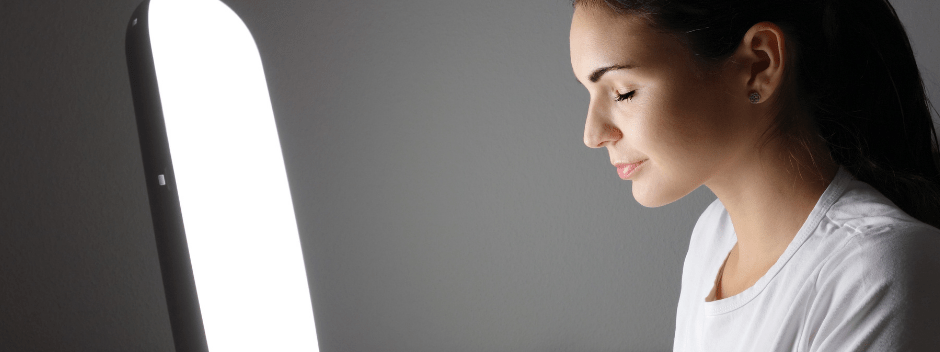Seasonal affective disorder is a type of depression that shows up at certain times of the year.
Typically, it begins in the fall, and lasts through to the spring.
Changes in daylight hours as well as lack of vitamin D from sun exposure are factors that contribute to S.A.D.
It’s important to not just brush off these feelings of “winter blues”. Seek treatment.
Common symptoms of S.A.D include:
-
- Feeling depressed most of the day, nearly every day
- Losing interest in activities you once enjoyed
- Having low energy
- Having problems with sleeping
- Experiencing changes in your appetite or weight
- Feeling sluggish or agitated
- Having difficulty concentrating
- Feeling hopeless, worthless or guilty
- Having frequent thoughts of death or suicide
While the above symptoms are also symptoms of non-seasonal depression, the following are more specific to S.A.D.
-
- Oversleeping
- Appetite changes, especially a craving for foods high in carbohydrates
- Weight gain
- Tiredness or low energy
There are three main factors that contribute to S.A.D(1)
1. Sunlight exposure
Sunlight plays a significant role in mood regulation, especially with regards to vitamin D production. Our skin produces vitamin D from exposure to UVA and UVB rays from sunlight. This is why reduced daylight hours in the fall and winter in the Northern hemisphere may affect one’s mood.
2. Low serotonin:
Low serotonin (a brain neurotransmitter) plays a role in mood.
Serotonin is a key neurotransmitter for happiness. There are many causes, one of which being lack of sunlight or low vitamin D as well as chronic inflammation.
3. Low melatonin:
Melatonin is a hormone that is released in the evening to promote sleep.
Since serotonin is converted to melatonin, people with low serotonin often have low melatonin and thus, problems with sleep. Adequate, quality sleep is important for mood regulation. If you struggle with getting enough sleep, speak to one of our practitioners.
Risk Factors
- Family history: S.A.D is more common in people with an existing mental health condition, and in people with a family history of depression.
- Vitamin D deficiency: very common in North Americans due to lack of sunlight exposure year round.
- Dr. Kristin Spark offers vitamin D testing to prescribe therapeutic dosages to her patients. She now also offers vitamin D injections.
Root Causes
There are several root causes that can contribute to mood disorders such as seasonal affective disorder.
-
- Poor diet and nutrient deficiencies
- Poor sleep
- High stress
- Gut microbiome imbalance (dysbiosis)
- Hormone imbalances

Treatments
Treatment can help prevent complications, especially if SAD is diagnosed and treated before symptoms worsen.
Light Therapy
Light therapy has been used to treat SAD for many years. It aims to expose people with SAD to a bright light every day to make up for the diminished natural sunshine in the darker months.
For this treatment, the person sits in front of a very bright light box (10,000 lux) every day for about 30 to 45 minutes, usually first thing in the morning, from fall to spring. The light boxes, which are about 20 times brighter than ordinary indoor light, filter out the potentially damaging UV light, making this a safe treatment for most.
Registered nutritionist Melanie Thomas now offers light therapy as a complimentary add on to any morning appointments.
Counselling and Psychotherapy
Counselling offers a safe space to both express your emotions and get support and tools to help you manage your emotions and feel better.
There are several different forms of therapy that can be useful, including one of the most common, CBT; cognitive behavioural therapy.
CBT aims at helping people learn how to cope with difficult situations and shift their thought patterns. It’s been proven to be effective with people experiencing S.A.D.
When it comes to mental health our team takes a whole person, root cause approach.
Lifestyle Changes
Exercise
Research has shown that as little as 20 minutes of exercise, most days per week can result in a significant improvement in mood.
Sun Exposure
Get outside on sunny days and soak in the sun. Even though it’s not strong enough to produce vitamin D, it can still boost your mood.
Eat to balance blood sugar
Blood sugar imbalances directly impact mood. Be sure to combine carbohydrates with protein, fat and fibre.
Vitamin D
The standard recommended dose is now 2500 IU, but most Canadians need more. However, it’s important to not self prescribe more than 2500 IU per day without working with a practitioner.
Supplements
There are a wide variety of evidence based supplements that can help support mood including adaptogen herbs, 5-HTP, curcumin and more, however, do we do not recommend taking a natural supplement without working with a practitioner, especially if you are on mood altering medications.
Morning routines
How you start your day sets your mood for the day. Build a routine that works for you.
This might look like:
- Avoiding screen time
- Having a balanced breakfast
- Using light therapy while you eat breakfast
- Doing some brief journalling including gratitude
- Moving your body: a gentle yoga practice or a brisk walk or run, weather permitting
At Verdure we know the value of the mind-body connection. Our practitioners work as a team to support all aspects of your health.
If your mental health is impacting your life, reach out for help.
Click below to book your session.



